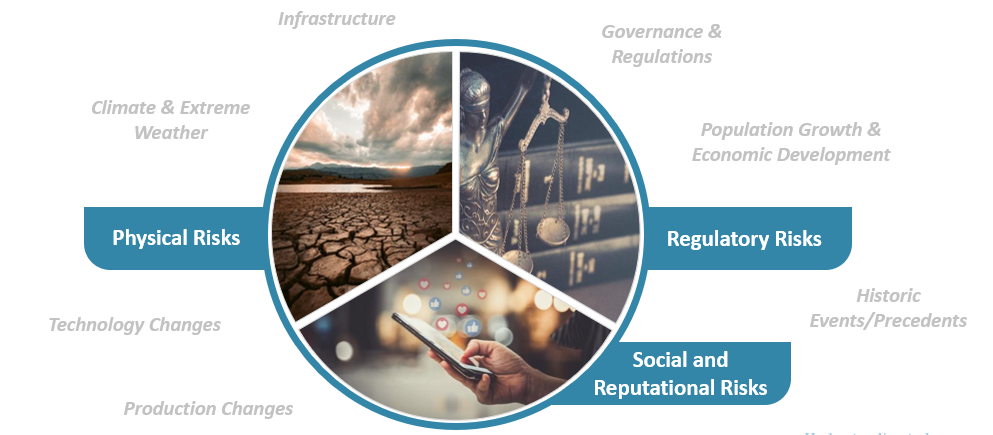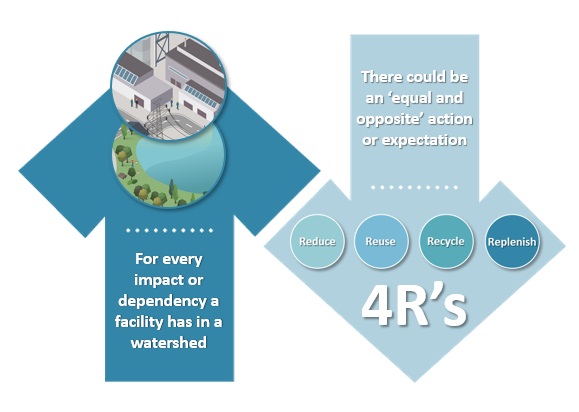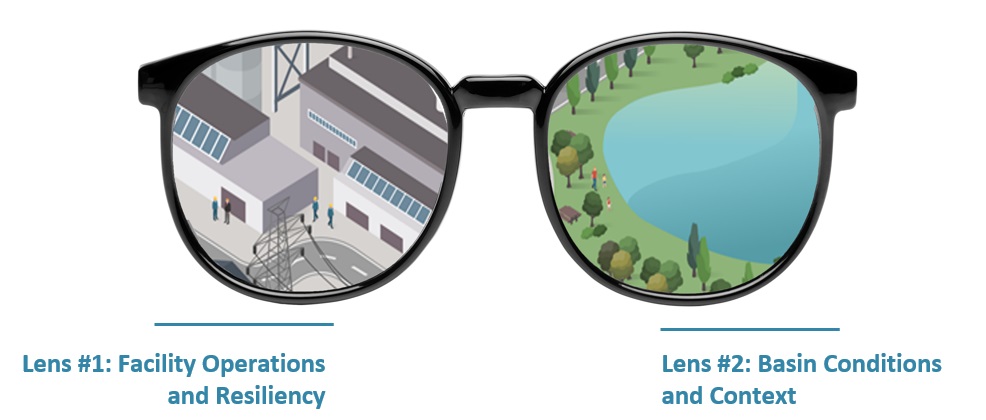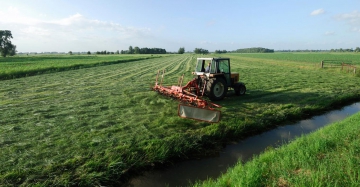Starting one drop, one watershed at a time to create a strategy that works for your facilities facing water risks and opportunities.
“The Earth might seem like it has abundant water, but in fact, less than 1 percent is available for human use… although it's true that the water cycle continuously returns water to Earth, it is not always returned to the same place, or in the same quantity and quality.” – U.S. EPA
The days of taking without giving back are over. Between investors, stakeholders, and the public, there are very few groups who aren’t asking companies about water—How is a company managing business continuity in the short-term and realizing their roles as stewards for longer-term regional water security where they operate? And as climate change continues to impact conditions around the world, operational challenges involving water also grow—challenging organizations everywhere to address water differently and more holistically.
That’s why we created One Watershed at a Time—a three-part webinar series designed to explore common water stewardship and security journeys. Here, we break down helpful learnings from the webcasts to highlight how companies can address risks and opportunities related to water, no matter where they are in their journey.
Learn the Lingo
To walk the walk first you have to talk the talk—let’s define a few common water sustainability terms so that you can start off with the right foundation:
- Stewardship and security: Water stewardship is using water in a way that maximizes its output. As defined by the U.N., water security is “The capacity of a population to safeguard sustainable access to adequate quantities of and acceptable quality water…”
- Reduce, reuse, recycle, replenish: Also known as the 4Rs, these actions help reduce water losses and boost efficiency by conserving water at the source, finding new ways to optimize every drop by reusing it, and even working to replenish water that is removed from a watershed.
- Watershed, basin, catchment: A watershed is an area of land that streams, rainfall, and other water sources drain into. The word is sometimes used interchangeably with basin or catchment.
- Impacts and dependencies: Impacts are effects a facility has on its watershed, while dependencies are needs a facility must have fulfilled by the watershed and community (e.g. infrastructure, governance, etc.)
Translating Challenges to Business Risks
Most facilities face at least one of three main challenges when it comes to water: too little water, too much water, or too poor water quality. These can vary depending on watershed location, regulation, season, and many other factors.
Knowing the broader challenges you face is only one piece of the puzzle; digging into the specific business risks these challenges can pose is the next step.
The three challenges are a broad way to think about your water use. To get more specific, try to analyze the potential or actual business risks that can come from them. Common categories of water-related business risks include physical, regulatory, and social/reputation. Our team at Antea Group also recommends considering other factors that we think of as amplifiers, which can either increase or decrease the intensity of a risk (e.g. extreme weather, infrastructure maintenance).
Understanding the risks that come from water challenges is essential for getting buy-in from leadership, mitigating those risks, and taking action individually as a company or collectively with stakeholders to protect water in the future.

Focus on Your Facility
With calls for more transparency from investors and other stakeholders, it can feel like the pressure is on to make changes across the board, and fast. But we encourage a holistic approach—one that has corporate-level alignment but focused on driving actions at individual facilities given the local reality of watershed impacts and dependencies.
Assessing the local conditions and how your operations impact them is what we call finding local watershed context. Setting this context before acting is crucial—with water, everything hinges on location. What works in a dry area with droughts won’t work in a floodplain, for example.
The toolkit for making tangible changes that alter your impact and/or dependencies are the 4Rs: reduce, reuse, recycle, replenish.

Reduce and reuse are inside the facility and mostly focused on reducing impacts (doing less harm), whereas recycling and replenishing happen outside the four walls of the facility and are focused on influencing dependencies and having a positive effect on the watershed.
Regardless of your specific concerns, know that there are others in your watershed who are looking to make a difference—up next, we’ll talk about finding those partners and collaborating with them.
Look Beyond for Collaborative Opportunities
Making context-based investments is just like utilizing the 4Rs: you must consider conditions inside and outside of your own facilities. It’s like putting on a pair of glasses—one lens is focused on your facility and its operations, the other on local basin conditions and other context.

As you look through these lenses, you might recognize different options for source water protection. Depending on your business’ goals, impacts and dependencies, and local conditions, you might choose to conduct one or all the three following actions: a desktop basin diagnostic, Source Water Vulnerability Assessment (SVA), or an SVA combined with plan development.
Once you’re comfortable with addressing water stewardship within your own organization, it becomes clear that there are many water security challenges we all share—and we can’t solve them alone. The public sector, private sector, NGOs, entrepreneurs, investors, academics and civil society must all be engaged in solving water scarcity and quality problems.
There have been several successful models of collaboration in the past decade. One is the Beverage Industry Environmental Roundtable (BIER), which brings together 15 leading beverage companies to solve shared challenges they all face as an industry and within shared watersheds.
Keep Making Change
Whether you’re just beginning your water stewardship journey or collaborating with other organizations outside your four walls, the progress you’re making is needed in today’s world. Addressing water now will help your business remain viable and stable in the future.
Reach out today to get support with your next water project.
Want more news and insights like this?
Sign up for our monthly e-newsletter, The New Leaf. Our goal is to keep you updated, educated and even a bit entertained as it relates to all things EHS and sustainability.
Get e-NewsletterHave any questions?
Contact us to discuss your environment, health, safety and sustainability needs today.





